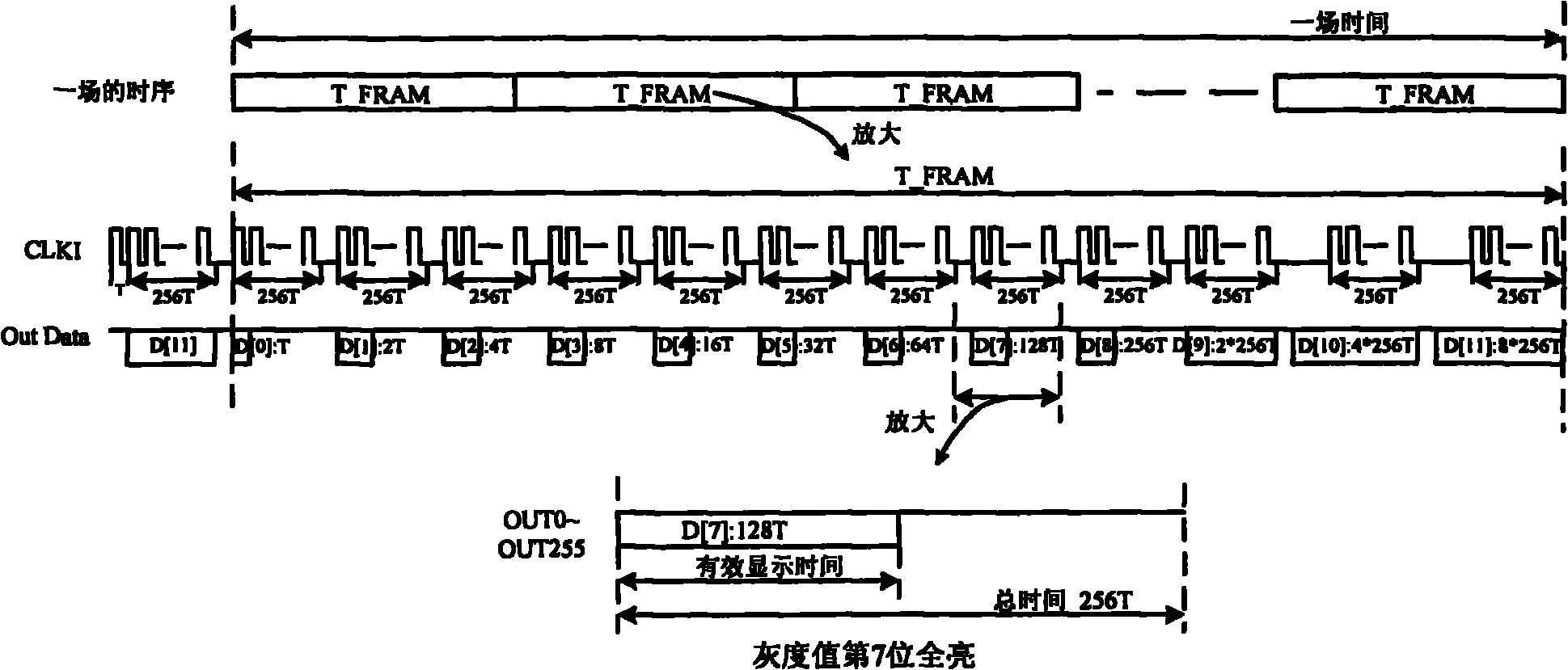Light-emitting diode (LED) display system and method having pulse scattering mode
A display system and LED lamp technology, applied in static indicators, lighting devices, light sources, etc., can solve the problems that the distribution of brightness information cannot be guaranteed to be very uniform, cannot be scattered, and there is no algorithm, etc., to achieve uniform distribution of brightness information and simple algorithm Clear, reduced flickering effects
- Summary
- Abstract
- Description
- Claims
- Application Information
AI Technical Summary
Problems solved by technology
Method used
Image
Examples
Embodiment Construction
[0053] The content of the present invention will be further described below in conjunction with the LED display system.
[0054] figure 1 It is a schematic diagram of the timing of the traditional LED pulse display mode. like figure 1 As shown, in the shown T_FRAM time, a total of 12 times of display and shift are required, and the total time of T_FRAM is about 23*256T; in this T_FRAM, the brightness of a certain LED light is calculated as follows:
[0055] D[0]*1T+D[1]*2T+D[2]*4T+D[3]*8T+D[4]*16T+D[5]*32T+D[6]*64T+D [7]*128T+D[8]*256T+D[9]*2*256T+D[10]*4*256T+D[11]*8*256T.
[0056] It can be seen from the figure that the luminance information of the high bits of the 12-bit grayscale value will be displayed intensively. For example, the effective display time of the highest bit accounts for more than 1 / 3 of the total time T_FRAM, which will make the brightness of the human eye very uncomfortable. Uniform, resulting in full-screen color is not soft. The above-mentioned met...
PUM
 Login to View More
Login to View More Abstract
Description
Claims
Application Information
 Login to View More
Login to View More - R&D
- Intellectual Property
- Life Sciences
- Materials
- Tech Scout
- Unparalleled Data Quality
- Higher Quality Content
- 60% Fewer Hallucinations
Browse by: Latest US Patents, China's latest patents, Technical Efficacy Thesaurus, Application Domain, Technology Topic, Popular Technical Reports.
© 2025 PatSnap. All rights reserved.Legal|Privacy policy|Modern Slavery Act Transparency Statement|Sitemap|About US| Contact US: help@patsnap.com



